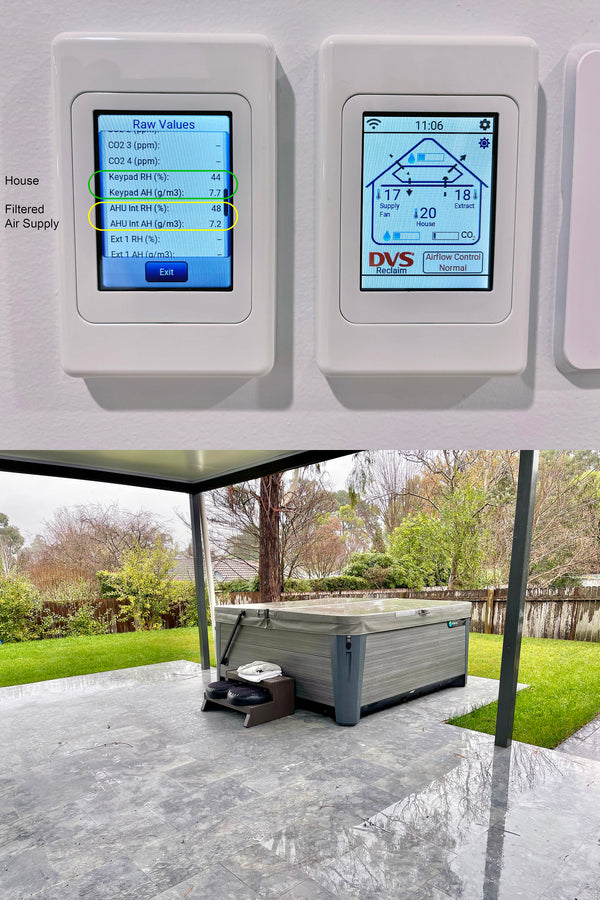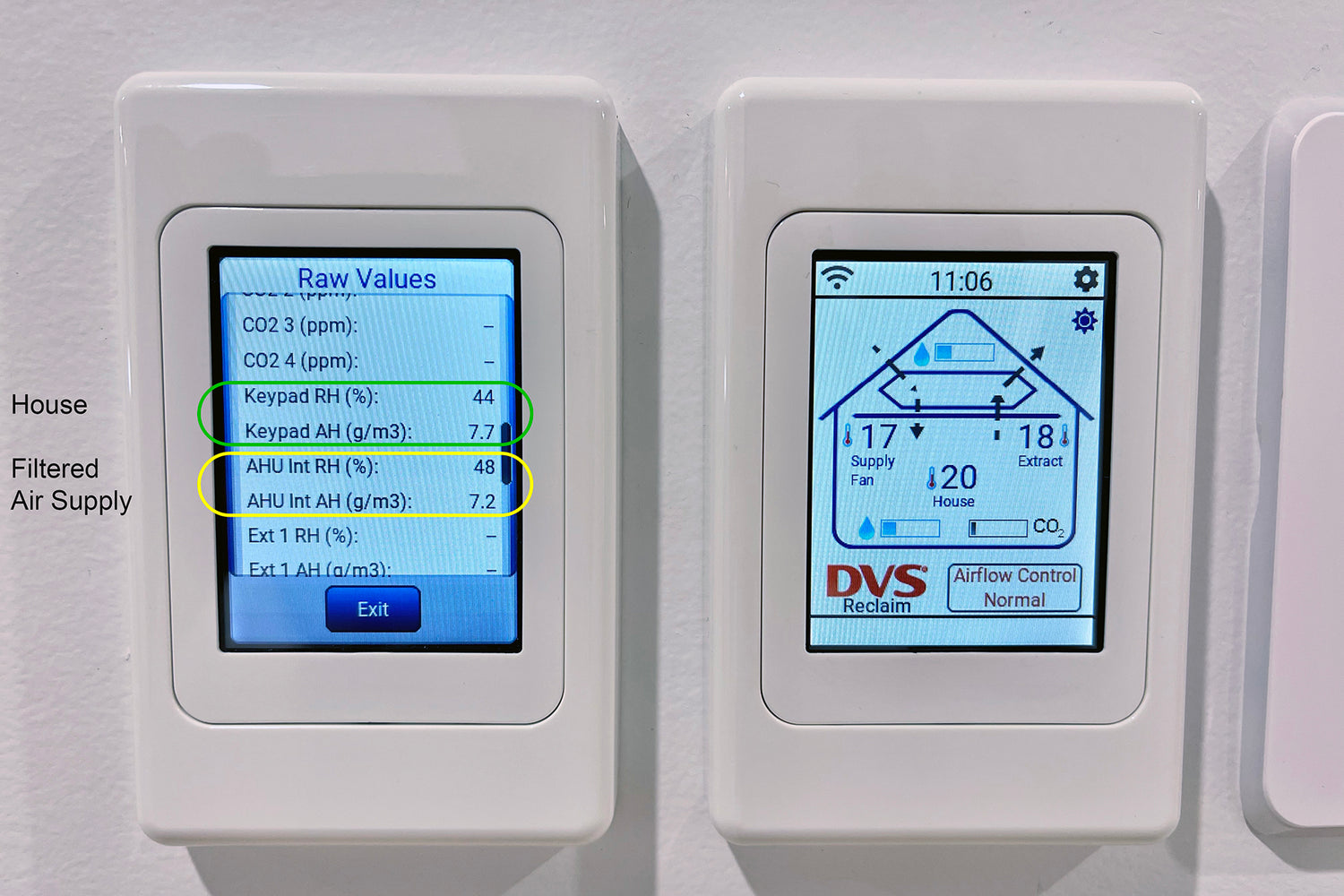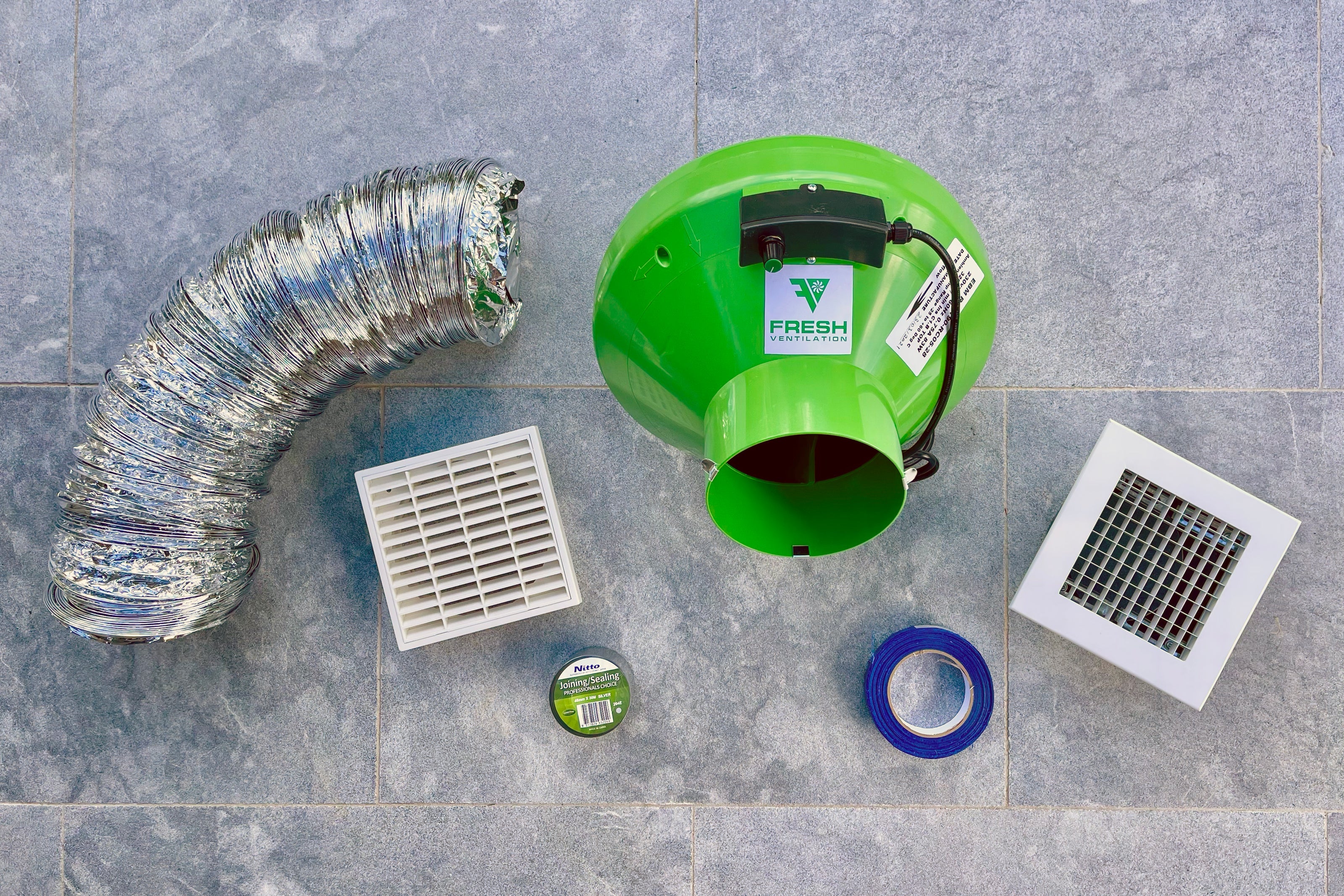Humidity plays an important role in both our comfort and the health of our environment. It's also a key factor in the design and operation of effective ventilation systems, like our premium products at Fresh Ventilation, aimed at ensuring optimal indoor air quality. The concepts of relative humidity and absolute humidity are fundamental to understanding how moisture interacts with air, but they are often misunderstood, particularly in relation to subfloor humidity. This blog aims to clarify these concepts, providing a detailed comparison complete with examples to illuminate their differences and applications.
Understanding Relative Humidity
Relative Humidity (RH) is a measure of how saturated the air is with water vapour, expressed as a percentage. It's a relative measure because it compares the current amount of moisture in the air to the maximum amount of moisture the air can hold at that temperature. The key point here is that the maximum moisture capacity of air changes with temperature: warmer air can hold more moisture than cooler air.
For example, if the air at 20°C contains half the moisture it's capable of holding at that temperature, the RH would be 50%. But if the temperature drops to 10°C, and the amount of moisture in the air remains the same, the RH would increase because the air's capacity to hold moisture decreases with temperature.
Understanding Absolute Humidity
Absolute Humidity (AH), on the other hand, is a measure of the actual amount of water vapour present in the air, regardless of the air's temperature. It's usually expressed in grams of moisture per cubic metre of air (g/m³). This measure provides a direct quantification of the air's moisture content, making it a crucial parameter for processes that depend on the actual moisture content in the air, such as in the design of ventilation systems. The key point here is that absolute humidity is unaffected by temperature: the same cubic metre of air will have the same AH, regardless of temperature.
For instance, if a room's air at 20°C contains 10 grams of water vapour per cubic metre of air, the AH is 10 g/m³. If this air is heated to 30°C without changing its moisture content, the AH remains 10 g/m³, even though the RH would lower due to the increased capacity of the warmer air to hold moisture.
Comparative Examples
To illustrate the difference between RH and AH, consider two scenarios:
- Morning Dew: Early in the morning, the air temperature might be around 10°C with an RH of 90%. This high RH is why dew forms on grass; the cool air cannot hold much moisture, so excess moisture condenses out. As the sun rises and the temperature increases to 20°C, if no additional moisture is added to the air, the RH will decrease because the warmer air can hold more moisture. However, the AH remains unchanged because the actual amount of water in the air hasn't changed.
- Indoor vs Outdoor Air: Imagine it's a chilly day outside with a temperature of 5°C and an RH of 70%. Inside, a heating system maintains a comfortable 20°C with an RH of 30%. The cooler outdoor air has a higher RH because it's closer to its moisture-holding capacity at the lower temperature. If we were to bring this outdoor air inside and warm it to 20°C without changing its moisture content, its RH would drop significantly because the warmer air can hold more moisture. However, the AH of the air remains the same inside and outside, as the actual moisture content hasn't changed, only its temperature.
Implications for Ventilation Systems
Understanding the difference between RH and AH is crucial when designing and operating ventilation systems, especially in climates with significant temperature variations. While RH gives a quick sense of comfort levels, AH provides a more consistent measure of moisture that needs to be controlled. Ventilation systems designed with a focus on maintaining optimal AH levels can more effectively manage indoor air quality and comfort.
Subfloor Ventilation
We often encounter situations in subfloor areas where ventilation systems have been installed, yet clients express concerns about "elevated" humidity levels. Upon delving into their concerns, it invariably emerges that their apprehensions are grounded in misunderstood readings of relative humidity. However, this metric can be deceptive, especially in the context of subfloor environments, which are inherently cooler and less exposed to natural light, preventing them from warming up as much as outdoors does. This inherent coolness means they will naturally exhibit higher relative humidity levels compared to outdoor air, a consequence of the cooler air's reduced capacity to hold moisture.
It's crucial to understand that relative humidity is intrinsically tied to temperature, making it an unreliable gauge of moisture levels in these cooler subfloor spaces. In our experience, when we've conducted onsite evaluations in response to such concerns, we've consistently found that the absolute humidity within these subfloor areas is actually more favourable than within the living spaces of the homes above. This is a direct result of the effective ventilation these spaces receive, with air from the outside circulating through at rates of up to 12 air changes per hour during daylight hours. Unfortunately, the cooler temperatures in subfloor spaces lead to misinterpretations of humidity data, with clients sometimes mistaking the higher relative humidity as indicative of problematic moisture levels, not realising that the absolute humidity tells a more reassuring story of their subfloor's air quality.
Heat Recovery Ventilation
Opposition to Mechanical Ventilation with Heat Recovery (MVHR) systems often stems from a misconception about their effectiveness in managing indoor humidity, especially under the assumption that they may falter during wet weather conditions. Critics argue that since outdoor air isn't always dry, MVHR systems might not always mitigate moisture issues effectively, and could, in adverse conditions, exacerbate indoor humidity levels.
This perspective, however, overlooks the sophisticated design and functionality of contemporary MVHR systems. Modern MVHR systems (such as every single system we sell from DVS, Zehnder, Stiebel Eltron, LUNOS, Vortice and Systemair) are equipped with advanced humidity sensors and automated controls that meticulously regulate the quality of air being introduced into the indoor environment, ensuring it's conducive to maintaining optimal moisture levels.
To illustrate this point, let's consider Melbourne's climate, the location of the above critic. According to the Bureau of Meteorology (BOM), June is the most humid month in Melbourne, with average temperatures and humidity levels of 9.4°C and 80% at 9am, and 13.7°C and 63% at 3pm, respectively. Using an absolute humidity calculator, these conditions equate to average absolute humidity levels of 7.2g/m³ in the morning and 7.5g/m³ in the afternoon. In stark contrast, the typical unventilated Australian home we encounter usually exhibits absolute humidity levels ranging between 12g/m³ and 16g/m³.
Therefore, even during Melbourne's most humid month, the air outside is significantly drier compared to the air within an unventilated home. For instance, if an MVHR system were to intake air at 9.4°C with 80% RH and an absolute humidity of 7.2g/m³, and then warm it to a comfortable 20°C, the resultant air delivered into the home would have a relative humidity of approximately 41.7%. This clearly demonstrates the substantial benefit and efficacy of MVHR systems in enhancing indoor air quality by significantly reducing moisture levels, even in the face of external humidity challenges.
**Side Note** The above critic is still battling moisture, humidity and resulting window condensation problems inside his home.. something long since solved for anyone who actually has a home ventilation system.
The cover image for this blog depicts a good example of an HRV system in operation. It was taken in our own home in Bowral, on 3 June 2021, when it was 9°C outside and raining.
Conclusion
Both RH and AH offer valuable insights into air moisture content, but they serve different purposes. RH is more closely related to our perception of comfort and is influenced by temperature changes, making it a somewhat subjective measure. AH provides an objective measure of the moisture content in the air, crucial for technical applications, including the design and operation of ventilation systems. Understanding the nuances of both can help in creating indoor environments that are not only comfortable but also conducive to health and well-being.




Leave a comment
All comments are moderated before being published.
This site is protected by hCaptcha and the hCaptcha Privacy Policy and Terms of Service apply.